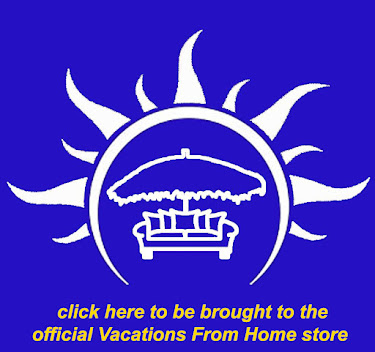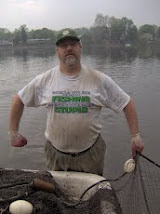IT’S
COMPLICATED
Before the Coronavirus pandemic gripped the planet, Team
VFH sailed along the Pacific Coast from Costa Rica to Panama, stopping at
various ports of call in both countries. At the time we did not know the
severity of the virus and I guess we were lucky to not have gotten sick and we
had a great time in these Central American countries. We explored beautiful rainforests,
saw an incredible array of animals and birds and snorkeled in coral reefs, all
the while feeling safe. Yet, there was once a time when I would have never traveled
to Central America and especially Panama.
 |
| NORIEGA |
While I was growing up the news out
of this strategic country was always dire. There were a series of coups and
unstable governments and seemingly endless civil unrest about the United States
still controlling the Panama Canal. Street gangs proliferated in Panama City
and Colon and the Columbian drug cartels used Panama as a smuggling staging
ground. The military dictatorship of Manuel Noriega was especially complicated
as he served as a conduit for the CIA in supplying support for the Contra
rebels in Nicaragua as a U.S. backed act of state-sponsored terrorism. Though
the United States considered him a valuable asset in the “war on drugs” his
Panama was the world’s first “Narco-Kleptocracy,” where he not only took money
from the U.S. government but also laundered money for the cartels. Eventually
tiring of him, the U.S. pushed to have Noriega step down in 1989, and his refusal
led to the largest American military action since the Vietnam War.
Since then, Panama has evolved into a stable
destination. The strategic canal was handed over to the Panamanians on December
31, 1991 and the contentious Panama Canal Zone, that was a five-mile swatch of
land from either side of the canal that was considered a United States territory
and afforded protection by the U.S. military was dissolved. Since then there
have been several peaceful transitions of elected governments in Panama and this
strategic isthmus between two continents and two oceans has become a popular
tourist destination.
Despite the success and commerce of the Panama Canal,
40% of the country is still forested and is as fantastic a destination for
eco-tourism as Costa Rica. Although our first two stops in Panama, Coiba Island
and Iguana Island had sordid histories, the beauty of both places is impossible
to overlook. You may remember my valued readers that Coiba Island served as a
notorious prison and Iguana Island was used by the United States military for target
practice during World War II.
THE
ROAD STOPS HERE
Panama is
an isthmus, a narrow strip of land separating two oceans, the Pacific and Caribbean
Sea and is of great strategic value. She is also a transcontinental country,
meaning its territory is on two continents. Southeast is Columbia, in South
America and to the west is Costa Rica in North America. In the past the demarcation
line between the two continents was the Darien Gap near the border with
Columbia, but now the Panama Canal is often cited as the dividing point between
the Americas. That would make Panama City, our final destination on our recent
trip, a South American city.
 |
| New Panama City seen from the old City |
Panama
City is a gleaming modern capital, but 40% of the country is still covered by
beautiful rainforests and cloud forests. The Darien Gap in the southeast of the
country is a vast untamed and protected land where even the lengthy Pan-American
Highway stops. The Pan-American Highway stretches from Prudhoe Bay in Alaska
all the way to Ushuaia, Argentina for 19,000 miles, but it is interrupted by 70
miles of thick primary tropical rainforest that forms the border between Panama
and Columbia. Impassable by car, one has to take a ferry to continue traveling
the longest motorable road in the world.
But, even
in the metropolis of Panama City there is a tropical forest within the city’s
limits. Parque Natural Metropolitano has
573 acres of trails, wildlife, activities and programs. So, it is possible to
see some of the forests of Panama without having to leave the city limits.
THE
BIG DIG
As an
isthmus Panama has been around for about 2.8 million years, but Panama the
country has only been around since 1903 when, with the help of the United
States, it seceded from Columbia. The U.S. had tried to strike a canal deal
with Columbia, but that didn’t work out, so Panama was “helped” in its
secession.
 |
| Our view of the Miraflores Locks, Panama Canal |
This
finally allowed the completion of the Panama Canal construction by the U.S.
Army Corps of Engineers in 1914, an idea floated about since 1529 with various
countries like Spain and France and even Scotland thought to traverse Panama in
their lone failed attempt at colonization. Spain would haul precious metals
from Peru across the isthmus to waiting galleons on the other side. During the
California Gold Rush in the 1840’s eager adventurous men clamored over the isthmus
to save a lot of time sailing from the east coast to the west coast.
In finishing
this engineering marvel, called the “Big Dig”, the United States was allowed to
carve out a territory five miles from either side of the canal for jurisdictional
purposes, maintenance and military protection. From the onset of this “agreement”
there was contention between Columbia, Panama and the United States.
THE
LAND DIVIDED – THE WORLD UNITED
The Canal
Zone was abolished in 1979 after the Torrijos-Carter Treaties that would give
Panama eventual full control of the canal on December 31, 1999. Critics of the
treaties felt that Panama had a history of unstable governments and the coups
and dictatorial regimes of Torrijos and later Noriega, the latter requiring
intense military intervention by the United States in 1989, seemed to prove
them right, but since Operation “Just Cause” Panama has had several peaceful
transitions of government through the democratic election process. On December
31, 1999 full control was given to the Panamanians and this strategic waterway
is maintained by the Panama Canal Authority and has recently expanded the canal
to allow larger ships through the 51-mile canal.
A
WORTHY DESTINATION?
Despite
Panama’s complicated history, she has a stable government and a smoothly running
Panama Canal, which will probably always be the most popular tourist attraction, but vast amounts of the country are still forested and worthy of exploration. I wished we had more time in Panama..
Who knew?
Thank you
for reading.
Love Janet
and greg
© 2020 by Greg Dunaj




















































